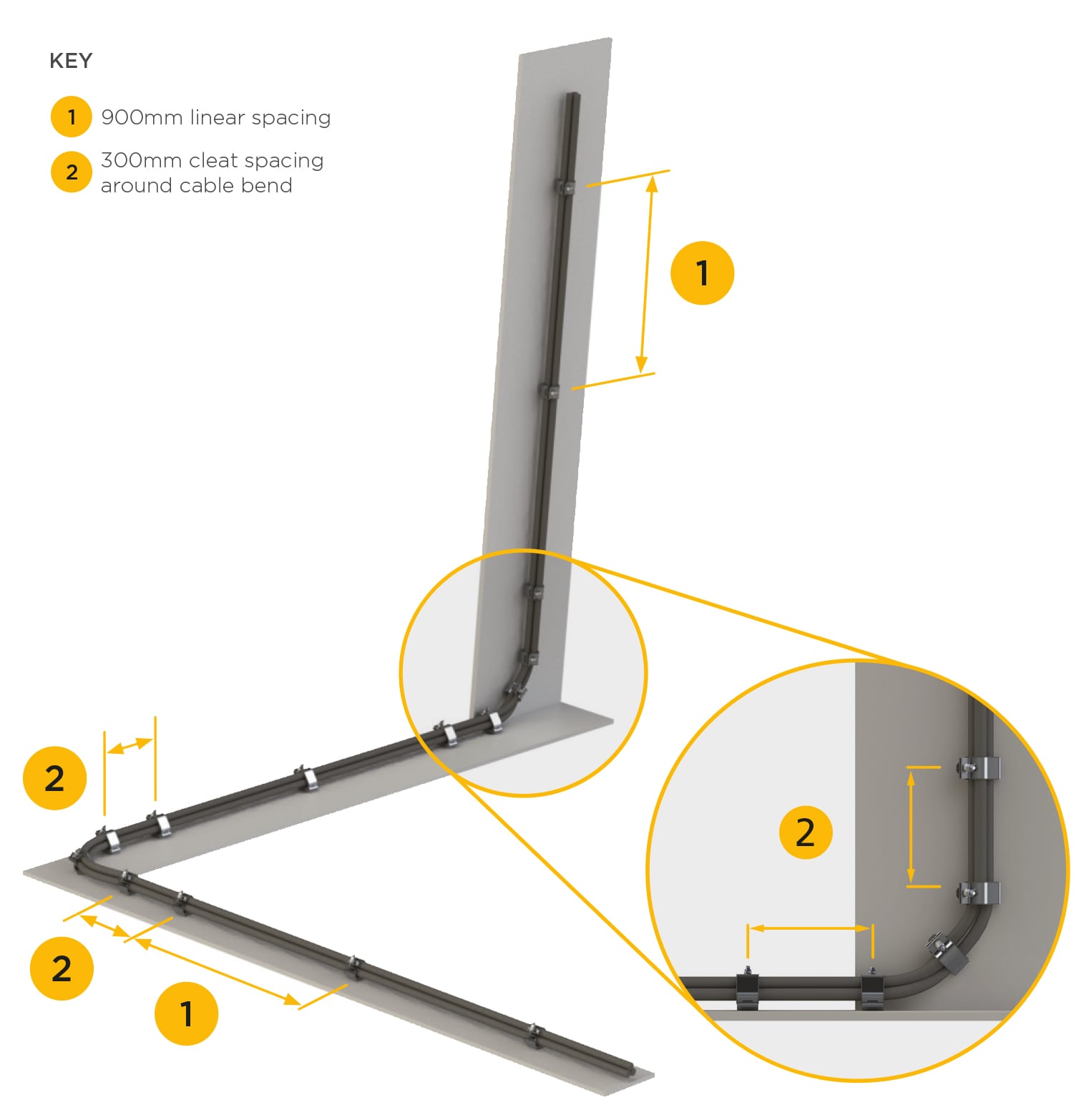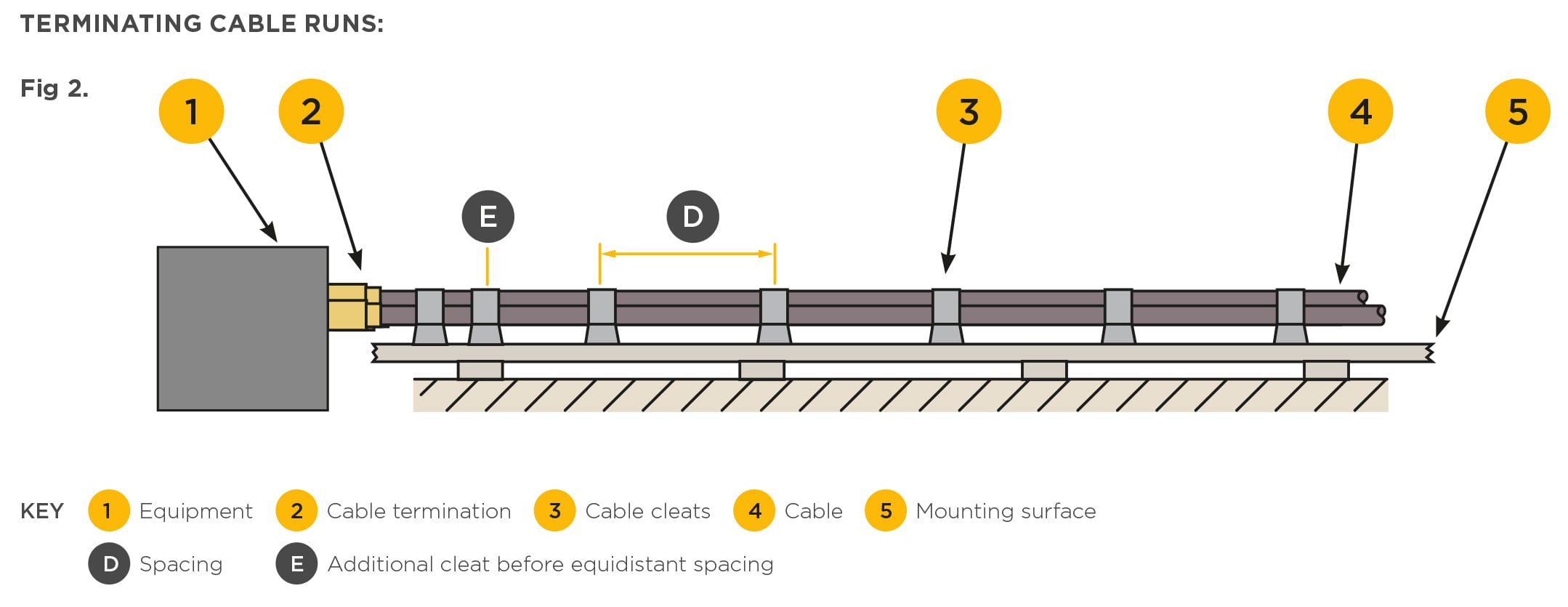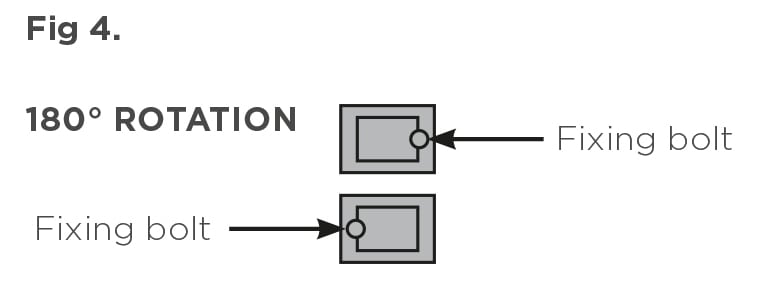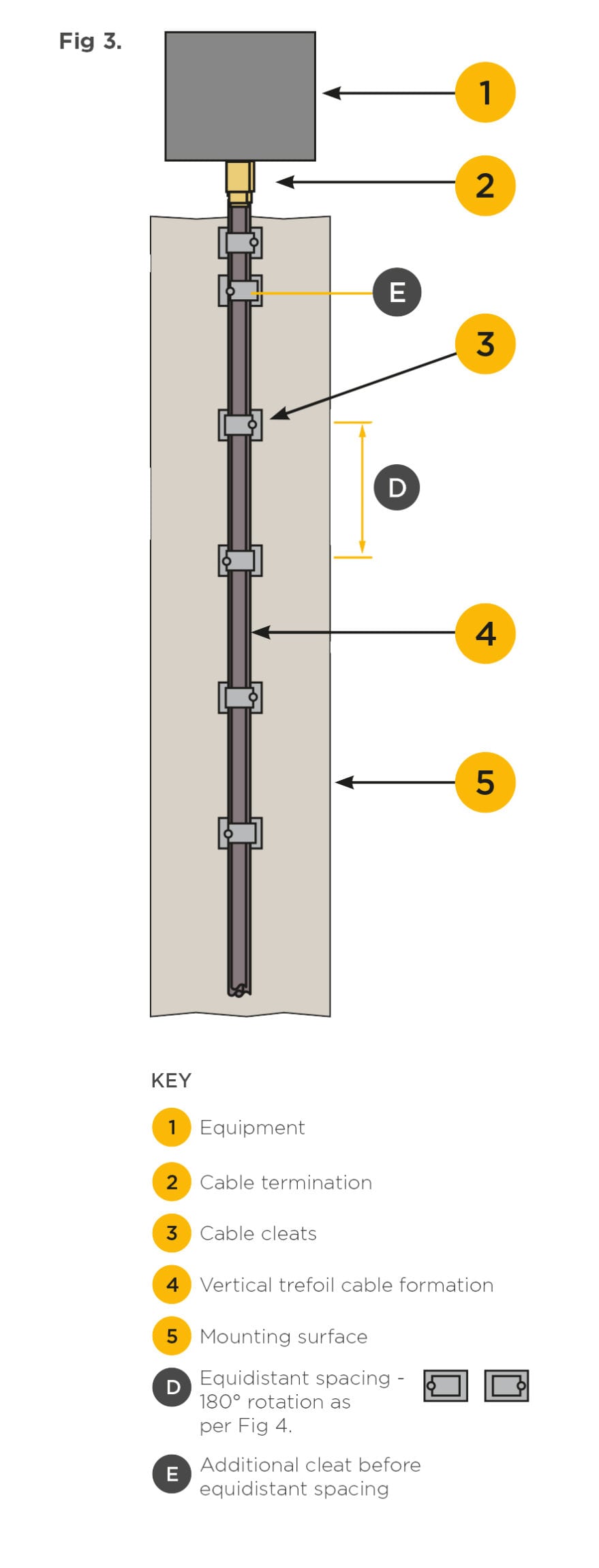- Home
- Cable Cleats for Electrical Installations
- Technical
- Good Installation Practices
- Certificate Downloads
- Cable Cleat Accessories
- Cable Cleat Nut Spacer
- Cable Cleat Selection
- Cable Formations
- Catalogue Downloads
- Recommended Cleat Spacings
- Cleat Fixing Packs
- Fire Performance
- Galvanic Corrosion
- Good Installation Practices
- How To Order
- Intermediate Restraints
- Materials
- Product Downloads
- Product Overview
- Resistance Classifications
- Twin arc profiles
- What is a Cable Cleat?
- What is a Short Circuit?
- Why use a Cable Cleat?
Need more help? Contact our team on +44 191 265 7411
Changes of Direction in Cable Routes
Cable routes that are installed through bends should be restrained differently to straight lengths of cable run, whether this cable routing is through a change in direction in the horizontal or vertical plane, or a transition from horizontal to vertical or vice versa.
As a guide to good practice, CMP recommends that throughout these changes in direction, cable cleats should be installed at a distance of 300mm; if this is not possible due to the lack of substructure then it is recommended that as an alternative to cable cleats, intermediate restraints are used in conjunction with cable cleats, spaced equidistant between the fixed cable cleats.

Termination and Jointing
Cable cleats are not only designed for the protection of the cable but for the cable system itself. This includes the accessories such as joints and terminations. In order to protect such accessories and reduce the mechanical load on these items, cable cleats are recommended
to be installed as close as possible to the accessories, followed immediately by an additional cable cleat before the equidistant spacing of the cable cleat installation.
This is recommended to compensate for the expansion forces generated during normal operation of the cables, and to prevent excessive axial movement that could be transferred onto the accessories / terminations and subsequently to the equipment.
The same installation technique should be applied at either side of any cable joints.

Trefoil Formation Vertical Runs
CMP Products recommends that cables that are to be installed in trefoil formation, in long vertical runs should use a method known as ‘alternative cleating’. This method involves installing cable cleats at equidistant spacing, but rotated by 180° every cleat.
This method allows a more even distribution of axial load through the cable cleat, resulting in a safer installation.

Practical Cable Cleat Spacing
The correct spacing of cable cleats is dictated by the short circuit forces produced during a fault, or by the axial load when cables are held in a vertical application, whichever is more onerous. When calculating these distances between cable cleats, the distances can be very large.
CMP Products recommends that cable cleats to be used for cables in trefoil formation should not exceed a 900mm spacing; for cable cleating in excess of 900mm, intermediate restraints shall be used at the mid-point between fixed cable cleats up to and including a distance
of 1800mm. This provides the safe restraint of the cables during fault conditions and prevents excessive ‘bird caging’ which can lead to cable damage and damage to surrounding infrastructure. These distances ensure that the cable formation specified for the installation is correctly maintained throughout the cable run.
If the required cable cleat spacing of any particular installation exceeds a distance of 1800mm, it should be noted that every installation is different, CMP Products will work with customers to ensure a safe and successful installation on a case-by-case basis.
